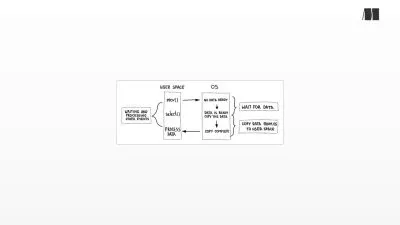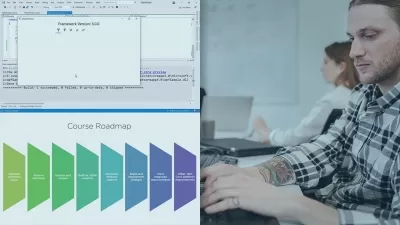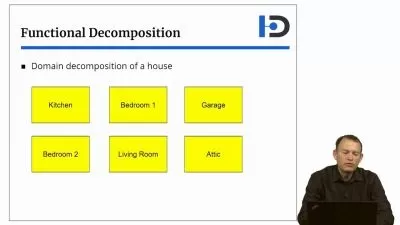Learn Flowcharting and Pseudocode. Be a better programmer!
5:44:45
Description
Learn the 2 most important skills in a programmer's tool box. Simplify your learning curve for any programming language.
What You'll Learn?
- In this course, you will learn to effectively use the two major computer programming tools, pseudocode (Sue-dough-code) and Flow Charts. The student will be able to start with a programming task or problem, break it down into its parts and accurately present the solution in either flow chart or pseudocode format.
Who is this for?
What You Need to Know?
More details
DescriptionThis is a great place to start your programming career or hobby. This course is best for you:
........If you have never programmed before, or ........If you are fairly new to programming, or
........If you can program, but are not familiar with flowcharting and pseudocode techniques.
This is a generic course, meaning you will not write source code in any specific programming language. You will learn to use pseudocode and flow charts, two major tools that all programmers can use in any programming language. Pseudocode is simple. You just write out the steps to be taken to perform any task, no matter how big or small. Flow charts do essentially the same thing using software that creates a visual chart showing accurately the flow of the process and the specific steps needed to accomplish your goal. Specific shapes are used to represent the type of action to be taken. It won’t be long before you become proficient at using both of these great programmer’s tools. (Flowcharting software is NOT required for this class. If you have Microsoft PowerPoint or Visio, you can use either of those. If not, your instructor will recommend a number of FREE and affordable software applications.)
Teaching methods: Expect to see mostly 10 to 20 minute video sessions where the instructor presents the topic in a slide show format. Later in the course, there will be Exercises for you to do, with answers supplied. Several handouts will be provided to supplement the lectures. The instructor will answer all of your questions promptly (usually within 24 hours.)
This course requires no prerequisite knowledge. Everything is explained in simple, easy to follow steps. In a very short time, you will be able to take a programming situation and reduce it to a series of steps that can be transferred to any programming language. Whether you are learning one of the top 10 languages, like Java, PHP, Python, JavaScript, C, C++, C# Visual Basic, Perl, or Lua, or one of the obscure entries on the more than 650 languages listed in Wikipedia's "List of Programming Languages", the skills you learn here will be valuable to you.
This course is taught by Richard Vannoy, a professional programmer and college programming instructor for over 25 years.
Who this course is for:
- Students who are new to programming, no matter what programming language they use or are thinking about.
........If you have never programmed before, or
........If you are fairly new to programming, or
........If you can program, but are not familiar with flowcharting and pseudocode techniques.This is a generic course, meaning you will not write source code in any specific programming language. You will learn to use pseudocode and flow charts, two major tools that all programmers can use in any programming language. Pseudocode is simple. You just write out the steps to be taken to perform any task, no matter how big or small. Flow charts do essentially the same thing using software that creates a visual chart showing accurately the flow of the process and the specific steps needed to accomplish your goal. Specific shapes are used to represent the type of action to be taken. It won’t be long before you become proficient at using both of these great programmer’s tools. (Flowcharting software is NOT required for this class. If you have Microsoft PowerPoint or Visio, you can use either of those. If not, your instructor will recommend a number of FREE and affordable software applications.)
Teaching methods: Expect to see mostly 10 to 20 minute video sessions where the instructor presents the topic in a slide show format. Later in the course, there will be Exercises for you to do, with answers supplied. Several handouts will be provided to supplement the lectures. The instructor will answer all of your questions promptly (usually within 24 hours.)
This course requires no prerequisite knowledge. Everything is explained in simple, easy to follow steps. In a very short time, you will be able to take a programming situation and reduce it to a series of steps that can be transferred to any programming language. Whether you are learning one of the top 10 languages, like Java, PHP, Python, JavaScript, C, C++, C# Visual Basic, Perl, or Lua, or one of the obscure entries on the more than 650 languages listed in Wikipedia's "List of Programming Languages", the skills you learn here will be valuable to you.
This course is taught by Richard Vannoy, a professional programmer and college programming instructor for over 25 years.
Who this course is for:
- Students who are new to programming, no matter what programming language they use or are thinking about.
User Reviews
Rating

Udemy
View courses Udemy- language english
- Training sessions 21
- duration 5:44:45
- English subtitles has
- Release Date 2024/10/30








